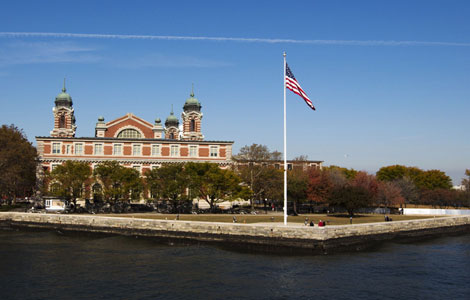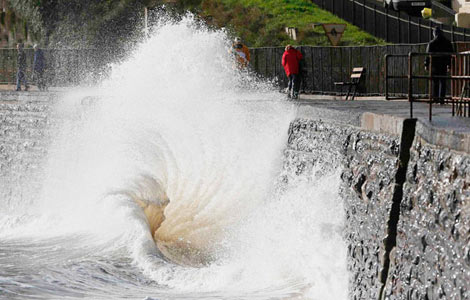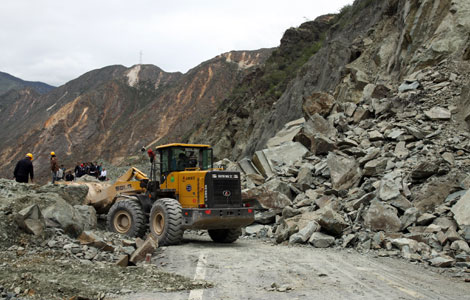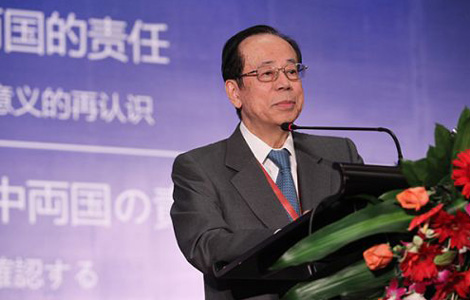Provinces to monitor PM2.5 density
Updated: 2013-10-29 21:32
By Wang Qingyun (chinadaily.com.cn)
|
||||||||
Sixteen provinces or municipalities have been asked by the National Health and Family Planning Commission to monitor and report the density of PM2.5 and its impact on people's health.
PM2.5 is tiny particulate matter considered the most harmful to health.
The 16 provinces or municipalities are: Beijing, Tianjin, Hebei, Shanxi, Liaoning, Heilongjiang, Shanghai, Jiangsu, Shandong, Henan, Hubei, Guangdong, Chongqing, Sichuan, Guizhou and Shaanxi.
In January, smog blanketed a quarter of China's territory, home to 600 million people, the commission said.
It has told each of the 16 areas to select cities to collect data on air pollutants for 2013. In addition to PM2.5, data will be collected for PM10, sulfur dioxide, nitrogen dioxide, carbon monoxide and ozone.
Each province or municipality must set up two monitoring stations, one in a heavily polluted community and the other in a community where air pollution is lighter. Healthcare centers will monitor the number of medical cases each day.
From October to December, the monitoring stations will collect samples of PM2.5 for seven consecutive days each month, or every day during smoggy days. They will analyze the density of PM2.5 and what it consists of.
The cities will also collect data on local deaths in 2013, including gender, age, time of death, the cause, place of death and the family address.
Each city must appoint a top-level hospital, a children's hospital and an emergency medical service to track the number and types of medical cases they receive each day.
The monitoring stations must choose one to two primary schools, conduct a survey of 600 students on their health conditions and those of their family members, the outdoor and indoor air pollution they may be experiencing, with lung tests for 300 of the students.
Each station will also carry out a survey on the outdoor activities of 400 households.
The provinces or municipalities must upload all the data to the Institute of Environmental Health and Related Product Safety under the Chinese Center for Disease Control and Prevention and submit a report to the commission by February.
The commission plans to build an air pollution monitoring network nationwide in three to five years.
 Hot air balloons loom high on tourist horizon
Hot air balloons loom high on tourist horizon
 Ellis Island reopens for 1st time since Sandy
Ellis Island reopens for 1st time since Sandy ABC apologizes for 'Kimmel' joke
ABC apologizes for 'Kimmel' joke Lang Lang named UN Messenger of Peace
Lang Lang named UN Messenger of Peace
 Snowfall hits many areas of Tibet
Snowfall hits many areas of Tibet  Antiquated ideas source of Abe strategy
Antiquated ideas source of Abe strategy
 Storm wrecks havoc in S Britain, leaving 4 dead
Storm wrecks havoc in S Britain, leaving 4 dead
 Women's congress aims to close income gap, lift status
Women's congress aims to close income gap, lift status
Most Viewed
Editor's Picks

|

|

|

|

|

|
Today's Top News
Hawaii debates over gay marriage legalization
Kerry urges Iran to show nuke program peaceful
Albright counsels fact not myth in relations
Is Obama's lack of transparency really his fault?
San Diego Symphony debuts at Carnegie
Lang Lang takes on UN `Messenger of Peace’ role
Fonterra botulism scare laid bare in board inquiry
At 72, China's 'Liberace' still wows fans
US Weekly

|

|







